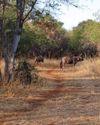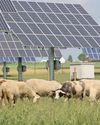
Chicken abattoirs, also known as poultry slaughterhouses, are facilities where chickens are slaughtered and processed for meat production. They are designed to handle large numbers of birds, ensuring that the process is carried out efficiently, hygienically and in compliance with animal welfare standards.
In South Africa, there are various laws and regulations in place to regulate abattoirs to ensure food health and safety.
THE SLAUGHTERING PROCESS
Once a bird has been selected for slaughter, it is sent to an abattoir. Upon receiving slaughter birds, the abattoir keeps them in the reception and holding area, which includes a live bird receiving area. This area is designated for receiving and unloading chickens from transport vehicles. It also includes ventilated holding pens where chickens are held before processing. These pens must have adequate space, water, and sometimes food to ensure animal welfare according to regulations.
The slaughtering and processing area is where the process of slaughtering begins, and includes a stunning and slaughter area, a bleeding area, a scalding tank, and plucking machines.
The stunning and slaughter area has facilities for the humane stunning and slaughtering of chickens. Some of the equipment used here includes electrical stunners or controlled atmosphere stunning systems. The bleeding area is where birds are bled out after slaughter. The scalding tanks are filled with boiling water to loosen feathers for easier plucking. Following the scalding tanks, the birds are sent to the plucking machines, which remove feathers efficiently.
Esta historia es de la edición June 21, 2024 de Farmer's Weekly.
Comience su prueba gratuita de Magzter GOLD de 7 días para acceder a miles de historias premium seleccionadas y a más de 9,000 revistas y periódicos.
Ya eres suscriptor ? Conectar
Esta historia es de la edición June 21, 2024 de Farmer's Weekly.
Comience su prueba gratuita de Magzter GOLD de 7 días para acceder a miles de historias premium seleccionadas y a más de 9,000 revistas y periódicos.
Ya eres suscriptor? Conectar

When short-term rentals make sense
Bianca Smit, national operations manager at CFAO Equipment SA, outlines factors to consider when choosing a rental equipment partner.

The timing of onion sowing is critical
Each onion variety has a different resistance to bolting, thus growers need experience and knowledge to guide them,

Understanding cannabis and hemp regulations in South Africa
South Africa's cannabis and hemp regulations remain a topic of debate and uncertainty, particularly when it comes to commercial use and small-scale production. Cannabis experts Shaad Vayej and Trenton Birch spoke to Octavia Avesca Spandiel about the challenges that small-scale cannabis and hemp farmers face.

European seed's influence on the US cannabis market
The expansion of European cannabis seed onto the US market is not just about economic growth; it’s also about enriching the landscape of US cannabis with diversity, innovation and education,

'It's important to get the right tool for the job'
The adoption of technology is crucial to sustaining efficiency gains and beating the cost-price squeeze in the agriculture sector.

A brilliant bushveld break between Bela-Bela and Modimolle
The distinctive touch, diligence, and 24/7 customer care are just a few of the reasons you should visit four-star Tourism Council-graded Pumula Game Farm,

John Deere: elevating performance and efficiency in modern farming
In the fast-paced world of farming, the right tools make all the difference.

The naval disaster Winston Churchill tried to hide
Three British warships were sunk by German naval gunfire on a dark day early in World War II, but the heroes who fought back received only muted recognition, possibly to avoid bad publicity,

Breaking down the principles of regenerative farming
Jean Hugo, a post-graduate student at the Tshwane University of Technology, and Leon Hugo, author on environmental matters and former professor of geography at the University of Pretoria, write about the importance of regenerative agriculture for small-scale farmers, and the challenges related to making the shift.

Ectoparasite control: more tips for livestock farmers
To reduce the mayhem that uncontrolled ectoparasites can create for communal farmers, it’s best to adopt a holistic approach in conjunction with veterinary remedies,